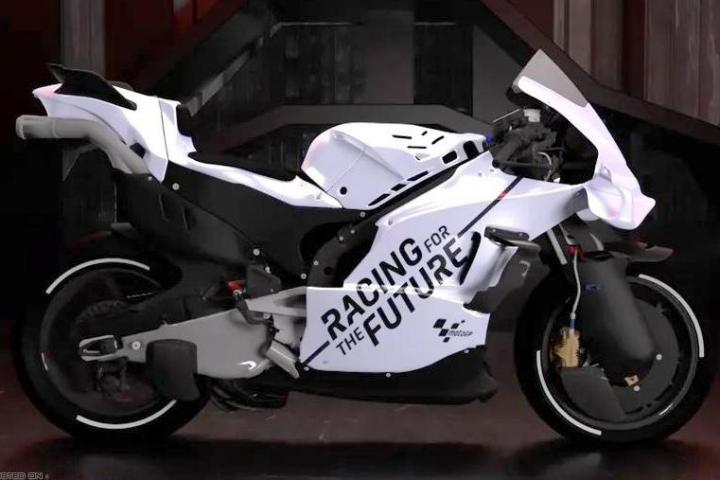News
2027 MotoGP rules to make racing safer, more efficient & spectacular
The new regulations include changes on multiple fronts such as engine, fuel, aerodynamics and even concessions.
BHPian Porschefire recently shared this with other enthusiasts.
Welcome to the future of MotoGP!


MotoGP will introduce new bikes from 2027, with new regulations set to make the sport safer, more sustainable and even more spectacular. The new machines will be more road-relevant and more efficient, powering global sustainability, and are designed to create even better racing and even more overtaking.
Engines
Engine size will be reduced from 1000cc to 850cc. The maximum bore will reduce from 81 to 75 millimetres, which will also limit performance. This makes the engines more road-relevant at the same time as ensuring they keep the characteristics of MotoGP. To make the sport even more efficient, the maximum number of engines allowed for each rider in a season will also reduce, from seven to six.
Fuel
MotoGP will race with 100% sustainable fuel from 2027 – rising from the minimum 40% the sport has raced with since 2024. As part of the new regulations, fuel tank capacity will also reduce, from 22 litres to 20, and riders will be allowed to use 11 litres during the Tissot Sprint.
Aerodynamics
Aerodynamics will be reduced and more tightly controlled, with the aim of minimising their negative effects. The width of the top of the front fairing will be 50mm narrower and the nose will be pushed back 50mm, reducing the effect of aero where it matters, on the straights and the braking areas. This will create even closer racing, with even more overtaking.
At the back, the aero behind the rider will be part of the homologation from 2027, and teams will only be allowed to update that once per season to control costs.
Ride Height and Hole Shot Devices
All ride-height and holeshot devices will be banned. That will control performance and make the sport safer, especially during race starts. This will also give even more importance to the skill of each rider, just like aero, is aimed at increasing their ability to overtake.
GPS Data
To level the playing field even further, GPS data from all riders will be available to all teams after each session.
Concessions
The current concession system, introduced at the end of the 2023 season, will continue – but as the new technical regulations come into force in 2027, all manufacturers will start the season in Rank B. They will then be assessed again mid-season, in summer 2027, and can change rank up or down to have access to more or less concessions. This reactive system means manufacturers’ performance is taken into account from Day 1, keeping the playing field as close as possible as a new era begins.
Here's what BHPian aravind.anand had to say about the matter:
I personally wished they banned all sorts of aero! From beautiful-looking motorcycles that resembled their road-going counterparts a lot, the aero wars have made today's GP bikes barely recognizable (and also hideous).
OT: I want to thank you @Porschefire, for your meticulous updates, reports and posts about MotoGP. In a nation where Motorsports are a minority compared to cricket, MotoGP is an even smaller subset when compared with F1. Very few passionate people like you, make following MotoGP and sharing our views more enjoyable.
Here's what BHPian Sensible_Speed had to say about the matter:
Introducing aero in motorcycles was a very dangerous thing to do indeed. What was Ducati thinking when they pioneered this? The traditional aerodynamic footprint of a motorcycle is so low that introducing aero made teams actually enlarge the overall size of their bikes.
Today, these things are massive and ugly, not to speak of the stability issues if you're hit with a sudden gust of wind going into a corner, or if you get it spectacularly wrong (I'm looking at Honda here). I feel motorcycle racing offers an exciting opportunity to experiment with the limits of the physically discernable aspects of automotive development (basically everything that doesn't involve an aerospace level of design to stick the bike to the tarmac).
These regulations may enable teams to get creative in other areas that are more relevant to two-wheeled motoring.
Here's what BHPian shree_shell had to say about the matter:
I am glad the engines will become smaller, closer to the supersport capacity engines. I am hoping that will allow for more manoeuvrability and improved handling.
The bikes with their large aero surfaces will keep looking ugly, but to play the devil's advocate - there is a WSBK series for bikes that are pretty much the same as the street versions; perhaps MotoGP is trying to go the F1 route, and I know that nothing on the street resembles RB20. Maybe the street-going version will start resembling MotoGP bikes, just take a look at the M1000RR.
Check out BHPian comments for more insights and information.













_5.jpg)





